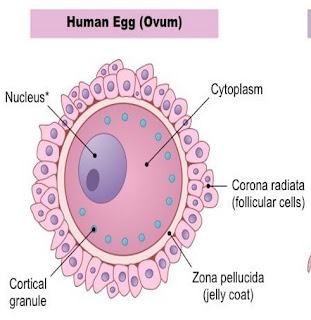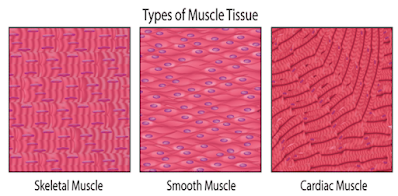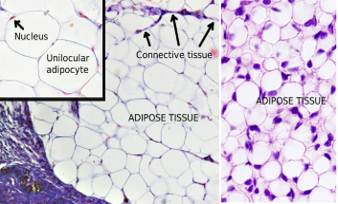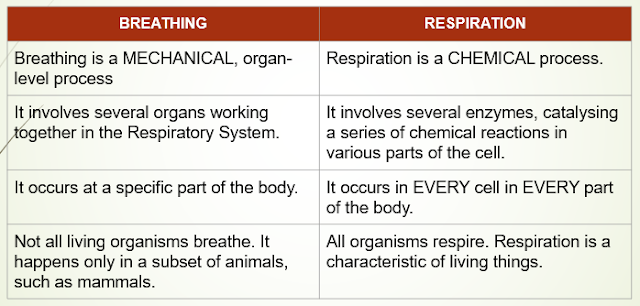SPECIALISED CELLS & STRUCTURAL HIERARCHY [CSEC BIOLOGY & HSB]
SYLLABUS REFERENCE
HSB
- [A4] identify selected cells which make up the human body;
- [A5] explain the importance of cell specialisation in humans;
CSEC BIOLOGY
SPECIALISED VS UNSPECIALISED CELLS
Unicellular organisms are just one cell in size. These cells are said to be unspecialised or undifferentiated. In unicellular organisms, these cells are independent, carrying out all the life processes by themselves.
Multicellular organisms consist of up to trillions of cells, depending on the organism. In a multicellular organism, there are great differences between cells, even as they have the same basic structure. Each type of cell is specialised to do a specific job, such as feeding, support, communication, or defense.
A specialised cell is a cell that has been changed to carry out a specific job in a multicellular organism.
Differentiation / Cell Specialisation is the Process of Becoming Specialised
Specialisation usually involves modification or adaptation to suit the cell's role. For example:
- Cells that use a lot of energy have many mitochondria.
- Cells that are important for diffusion have a large surface area.
- Cells that produce lots of proteins have many ribosomes and mitochondria.
BENEFITS OF SPECIALISATION
With specialisation, there is a division of labour, which increases the efficiency and speed at which various functions are carried out.
As an analogy, let's take a look at Ash and his team moving a very large, sleeping Pokémon.
- A specialised cell expresses fewer of the genes stored in its nucleus, as it only needs some of them. Gene expression requires the DNA in the chromosomes to be exposed on a regular basis. In a specialised cell, only some of the DNA is therefore exposed, and thus vulnerable to mutagens (toxins that cause mutation). This reduces the risk of mutations. This is part of the reason why mutations do not occur as regularly as in unicellular organisms.
- Especially for those specialised cells such as red blood cells, cell specialisation - the process - is a necessity. In order to replace old and worn-out cells, new versions come from the conversion of stem cells to the specialised cells. This is how one gets new red blood cells - by converting the stem cells located in the femur.
- Possible medical therapies include stem cell therapies for diseases such as Type 1 diabetes and Parkinson’s disease.
COSTS OF SPECIALISATION
Specialisation often means that individual cells lose their ability to carry out some bodily functions themselves. Thus, they become dependent on body systems to provide for those functions.
For example, a mature red blood cell is specialized to transport oxygen. It loses its nucleus during development, so it cannot reproduce. New red blood cells are produced in the bone marrow.
HUMAN BODY CELLS
EPITHELIAL CELLS
Epithelial cells cover internal and external surfaces. They line the surfaces of organs in the body, and function as a protective barrier.
There are several types of epithelial cells:
- Squamous: have a strong diffusion-related role. Found in lungs and gut walls.
- Columnar: Ciliated version have small, hair-like cilia that beat rhythmically to move substances through space. They are found in the respiratory and reproductive systems.
- Cuboidal: aid in secretion and absorption of chemicals. Found in glands and the stomach walls.
SPERM CELL (SPERMATOCYTE)
These are the male reproductive cells, known as gametes. They are haploid, meaning they have half the number of chromosomes found in other body cells.
Role:Fertilization of the egg cell. The spermatocytes are usually released a long way from the egg. They need to be able to move through the female reproductive system, towards the egg. They also need to be able to break into the egg.
They have several features to meet these requirements:
- A long tail that contains muscle-like proteins. It allows the cell to 'swim' toward the ovum.
- The middle section is full of mitochondria. They provide energy for the tail to work.
- The head has a special sac called the acrosome. This sac stores digestive enzymes that are used to break down the outer layers of the egg cell.
- It have a large nucleus, which contains the genetic information to be passed on to offspring.
EGG CELL (OVUM)
The female reproductive cell, also known as the female gamete. Like the sperm, they are also haploid. It is combined with a sperm cell to produce a new individual, during the human reproductive process.
Structure:
- They have a productive outer coat, to ensure only one sperm gets through to fertilise the egg.
- There is a store of food in the cytoplasm for the developing embryo.
NERVE CELL (NEURON)
Neurons are the structural and functional units of the nervous system. They are part of the communication and control system of the body.
They transmit electrical signals, called nerve impulses, from cell to cell. This is how information is transferred from one part of the body to another. Some neurons link body parts to the brain while others carry impulses from the brain to the rest of the body. Other nerve cells are linked to muscle cells and the impulse causes the muscle to contract.
This ability is facilitated by the following modifications:
- Neurons consist of a cell body containing the nucleus.
- From the cell body extends dendrites, which communicate with nearby neurons.
- A nerve fibre, called the axon, extends from the cell body. This transfers nerve impulses long distances.
- Nerve fibres are often covered by a protective and insulating myelin sheath, which allows nerve impulses to travel faster.
MUSCLE CELL (MYOCYTE)
Muscle tissue is composed of cells that have the special ability to shorten or contract to produce movement of the body parts. They are elongated cells which can contract and relax. When relaxed, they can be stretched and, when they contract, they shorten powerfully.
Modifications include the following:
- The muscle cells contain two proteins called actin and myosin, which enable cells to contract.
- Myocytes contain large quantities of mitochondria, which provides energy for contraction.
- Cells are arranged in bundles, which contract in sync.
- Cardiac - these cells contract to keep the heart beating.
- Skeletal - these cells contract to pull on bones for movement.
- Smooth - these cells are found in the gut. They contract to move food along.
CONNECTIVE TISSUE CELLS
Their main function is to form sheets that enclose body parts and join them to each other, giving support and strength.
- Loose connective tissue cells are embedded in a jelly-like substance.
- Fibrous connective tissue are set in fibrous materials. Examples include tendons, ligaments, and cartilage.
- Blood, which link all parts of the body.
- Adipose (fat) tissue cells lie under the skin and around various organs, storing fat.
STRUCTURAL HIERARCHY
From Cells to Organ Systems
Specialised cells are just the first layer of function in most multicellular organisms.
SPECIALISED CELLS --> TISSUE
Tissues are a group of specialised cells of the same type working together.
Examples:
- Epithelial tissue, made up of a specific type of epithelial cells. Squamous epithelial cells make up squamous epithelial tissue, and so on.
- Connective tissue joins parts of the body together.
- Nervous tissue carries information around the body.
- Muscle tissue contracts to move the body around.
TISSUE --> ORGAN
An organ is a group of various tissues, with different jobs, working together.
Examples: stomach and leaf.
 |
| LEAF CROSS-SECTION |
ORGAN --> ORGAN SYSTEM
This is a group of organs working together to carry out major functions in the body.
Examples: cardiovascular and digestive system.
 |
| THE DIGESTIVE SYSTEM |

















